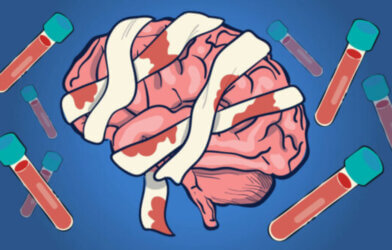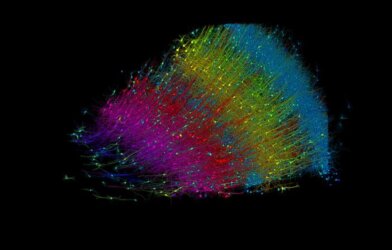For years, scientists have been puzzled by a peculiar phenomenon: some elderly individuals show significant signs of Alzheimer’s disease in their brains, yet remarkably, their cognitive abilities remain intact. These unique individuals, dubbed the “resilient,” have become the focus of intense research aimed at unlocking the mysteries of Alzheimer’s disease and uncovering potential new avenues for treatment.
In a landmark study recently published in the journal Acta Neuropathologica Communications, researchers from the Netherlands Institute of Neuroscience set out to investigate the molecular underpinnings of resilience to Alzheimer’s disease. Looking at brains from the Netherlands Brain Bank, scientists delved deep into the gene expression profiles of brain tissue from cognitively intact elderly individuals, Alzheimer’s patients, and the intriguing resilient group.
Gene expression is the process by which the information encoded in our genes is used to create proteins, the workhorses of our cells. By comparing gene expression patterns across different groups, researchers can identify which genes are turned on or off in specific conditions, providing valuable insights into the molecular mechanisms at play.
The team focused their analysis on the superior frontal gyrus, a region of the brain crucial for higher-order cognitive functions such as working memory and cognitive flexibility — abilities often impaired in Alzheimer’s disease. Using a powerful technique called RNA sequencing, they examined the expression levels of thousands of genes simultaneously.
The resilient individuals exhibited higher expression of genes related to two key processes: metallothionein signaling and mitochondrial function. Metallothioneins are proteins that help protect cells from oxidative stress and heavy metal toxicity, while mitochondria are the powerhouses of cells, responsible for generating energy. The findings suggest that these protective mechanisms may play a crucial role in maintaining cognitive function despite the presence of Alzheimer’s pathology.
“What is happening in these people at a molecular and cellular level was not clear yet. We therefore searched for donors with brain tissue abnormalities who did not show cognitive decline in the Brain Bank,” says study author Dr. Luuk de Vries, of the Netherlands Institute of Neuroscience. “Of all the donors we found 12, so it is quite rare. We think that genetics and lifestyle play an important role in resilience, but the exact mechanism is still unknown.”
Researchers also observed that resilient individuals had lower expression of genes involved in the unfolded protein response (UPR). The UPR is a cellular stress response that is activated when misfolded proteins accumulate, a common feature in Alzheimer’s disease. While the UPR is initially beneficial, chronic activation can lead to cell death and contribute to neurodegeneration. The fact that resilient individuals show reduced UPR activation hints at their ability to maintain cellular homeostasis and prevent the detrimental effects of persistent stress.
To validate their findings, researchers performed immunohistochemistry, a technique that allows the visualization of specific proteins in tissue samples. They confirmed increased levels of metallothioneins and mitochondrial proteins in the resilient group, providing further evidence for their potential protective roles.
“Exercise or being cognitively active and having a lot of social contacts can help in delaying the onset of Alzheimer’s disease. It has recently also been found that those who receive a lot of cognitive stimuli, like through a complex job, can build up more Alzheimer’s pathology before developing symptoms,” explains Dr. de Vries. “If we can find the molecular basis for resilience, then we have new starting points for the development of medication, which could activate processes related to resilience in Alzheimer’s patients.”
The study also revealed sex-specific differences in resilience mechanisms. Female resilient individuals exhibited higher expression of genes related to autophagy, a cellular cleanup process that helps remove damaged proteins and organelles. In contrast, male resilient individuals showed increased expression of genes involved in interferon signaling, a critical component of the immune response. These findings underscore the importance of considering sex differences in Alzheimer’s research and tailoring future therapeutic approaches accordingly.
While the study provides valuable insights into the molecular basis of resilience, researchers acknowledge that further work is needed to fully understand the complex interplay between genetics, environment, and lifestyle factors that contribute to cognitive resilience in the face of Alzheimer’s pathology.
“It remains difficult to determine from human data which process initiates the disease process,” concludes Dr. de Vries. “You can only demonstrate this by changing something in cells or animal models and seeing what happens next. That is the first thing we have to do now.”












